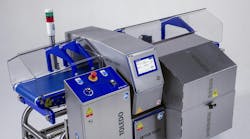As global obesity rates reach unprecedented levels, international health organizations and governments across the globe have been trying to come up with ways to curb the obesity epidemic. Promoting healthy eating and exercise, raising awareness, introducing regulations for food labeling and bans on fast food advertisements have so far proved unsuccessful.
In the United States, approximately two in three adults are overweight or obese and predictions are for about 50 percent of the adult population to be classed as obese by 2030. This could cause serious damage to the U.S. health system and the economy as a whole.
In a bid to provide a solution to this problem, a team of scientists is developing a method to produce food that has the same taste and look but contains 50 percent less fat than regular food products. Chemical engineers believe that if they manage to alter the typical food product nutrition qualities they might be able to offer consumers more healthy food, which still tastes good. They think that using hydrophobins, natural protein extracted from fungi, could be the answer, the Institution of Chemical Engineers reported on its website.
British researchers at the University of Birmingham explained that hydrophobins can serve as "foam" to aerate and bind ingredients better. Typically this role is played by fats and sugars, and these can be cut in half by using hydrophobins. Thanks to their emulsifying properties, the food can retain all of its flavors and textures. Hydrophobins can replicate the crumb structure in bread or the frothy head on beer, scientists say.
RELATED: Food and beverage companies surpass 2015 goal for reduced calories
If this technology is developed and becomes commercially available, people could still enjoy their favorite foods without gaining weight. Food products that require the use of foams and emulsifiers, such as mayonnaise, salad dressings, whipped cream, smoothies, crisps, marshmallows, cakes, chocolate, ice cream and cappuccinos, could be modified to become less calorie-laden and more healthy.
The process has a long way to go, though. Some of the hurdles to overcome stem from the food industry itself, researchers noted. In their latest review on emulsifiers, the University of Birmingham and the University of Wolverhampton pointed out that the adoption of hydrophobins in food production has been limited because of the "conservative nature" of the industry.
According to David Brown, chief executive of the Institution of Chemical Engineers, re-engineering food is a potentially effective solution in the battle with obesity but it is likely to take time. Whether it is able to help curb the rising obesity rates will mostly depend on consumers' attitude and on how responsive they are to the technology. Since the majority of people are reluctant to change their fixed eating habits, education and high public confidence in chemical engineering will be necessary, he added.
Brown gave the example of artificial sweeteners that took time to be widely adopted but are now a common feature of food production globally. This has led to a drop in sugar consumption, particularly in fizzy drinks. If people get to trust hydrophobins in the same way, food manufacturers could be forced to modify their products and contribute to promoting healthier lifestyles worldwide, he said.



